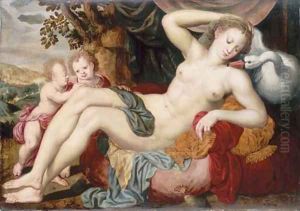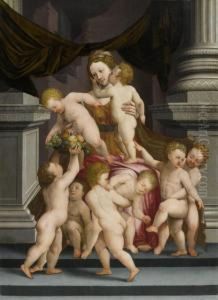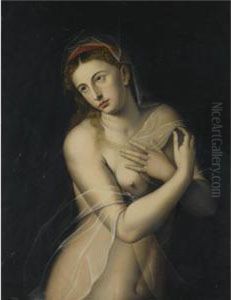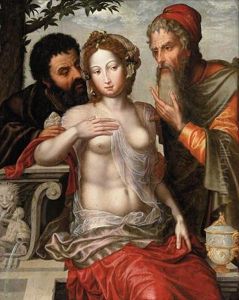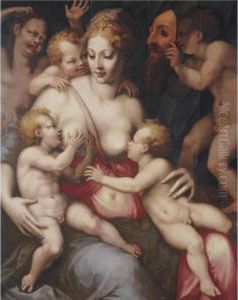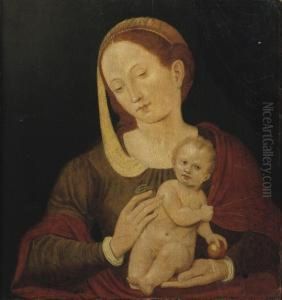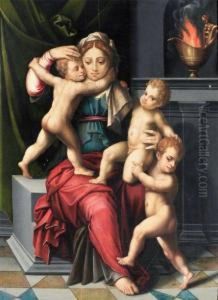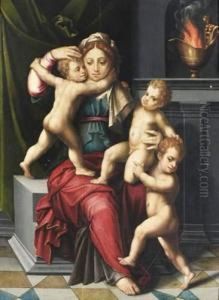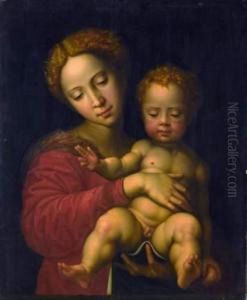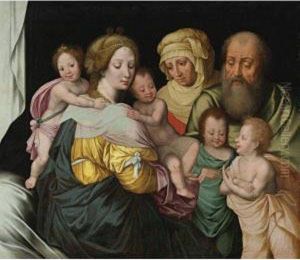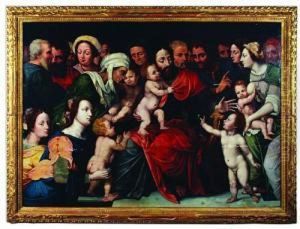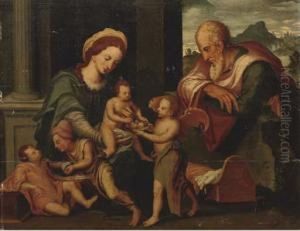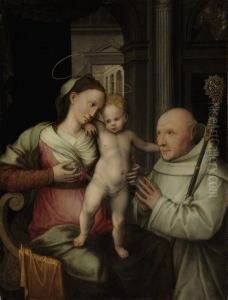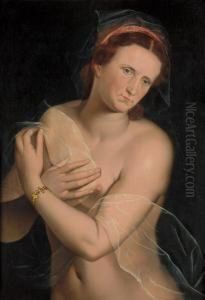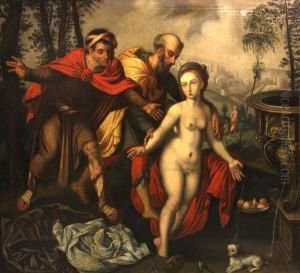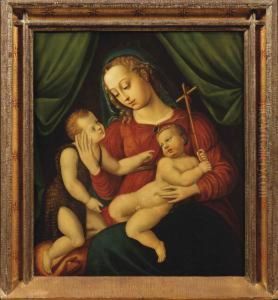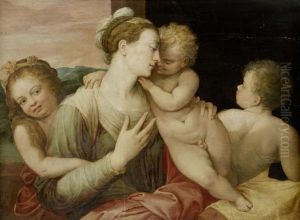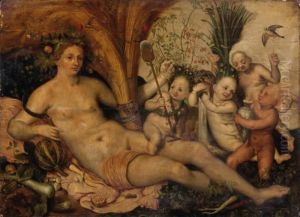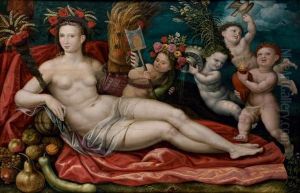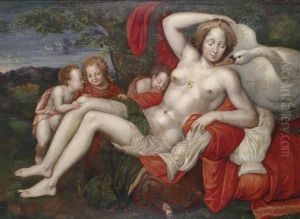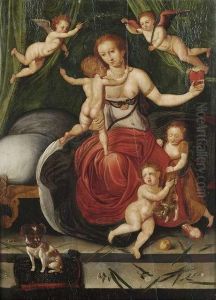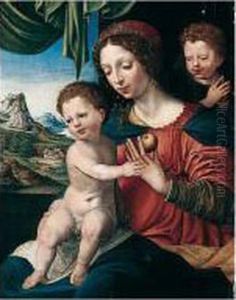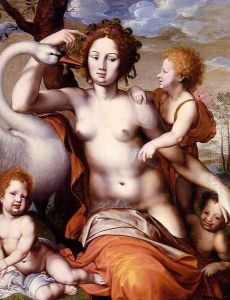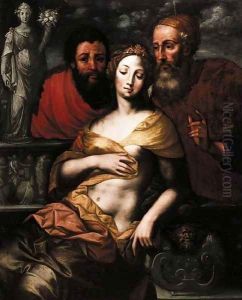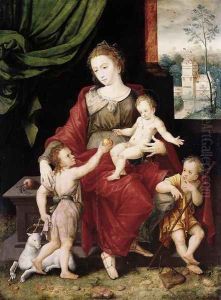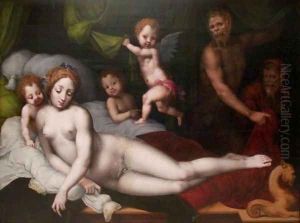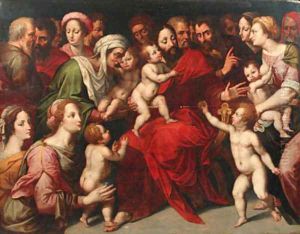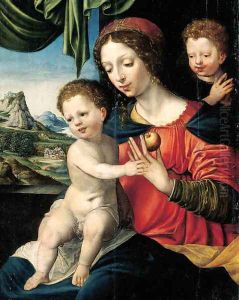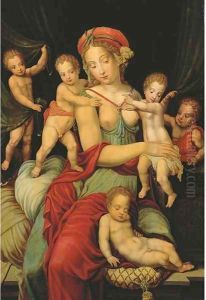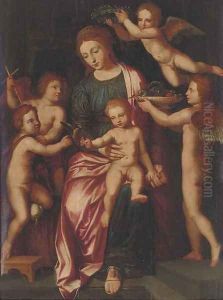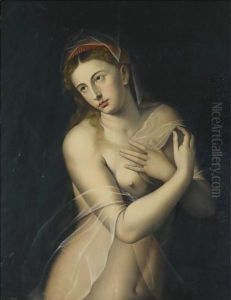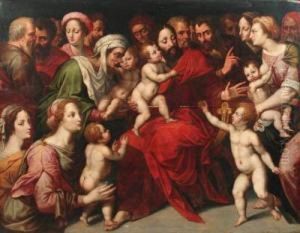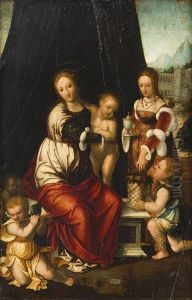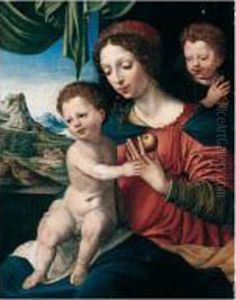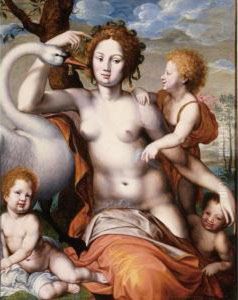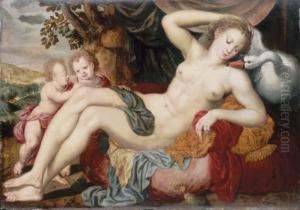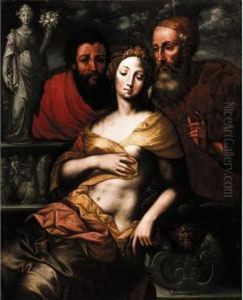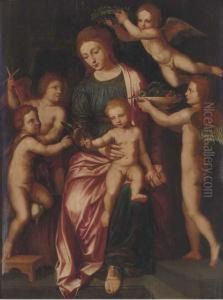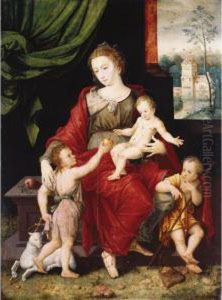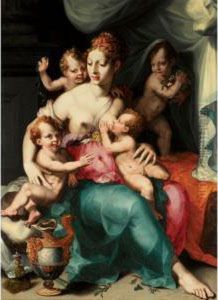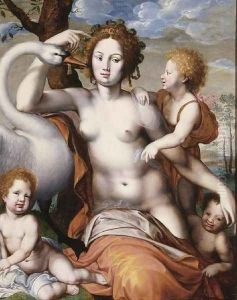Vincent Sellaer Paintings
Vincent Sellaer was a Flemish Renaissance painter, active during the first half of the 16th century. While the exact date of his birth is not known, it is estimated to be around 1490. His place of birth is also uncertain, but he is believed to have been born in Mechelen, in what is now Belgium. Sellaer's work is characterized by its strong compositional elements, vivid color palette, and incorporation of mythological and religious themes.
Sellaer was primarily known for his mythological scenes, often drawn from Ovid's 'Metamorphoses', and his paintings reflect a mix of Italian Renaissance influences and Northern Renaissance detail. He was also noted for his portrayal of female figures, which were rendered with a sense of grace and beauty. Despite the mythological subjects, his work also often contained allegorical meanings, which were common in the Renaissance period.
Unfortunately, much about Sellaer's life remains obscure, and there is a scarcity of documentation about his career. It is known that he became a master in the Mechelen painters' guild, which suggests that he was recognized for his artistic abilities in his time. His works were mostly religious in nature, reflecting the dominant themes of the period in Flanders.
Vincent Sellaer's death is similarly uncertain, but it is believed he died around 1564. His legacy is somewhat overshadowed by the more famous figures of the Flemish Renaissance, such as Pieter Bruegel the Elder and Hieronymus Bosch. However, his paintings can be found in various European art collections, providing insight into the diverse artistic currents of the 16th century in the Low Countries.
